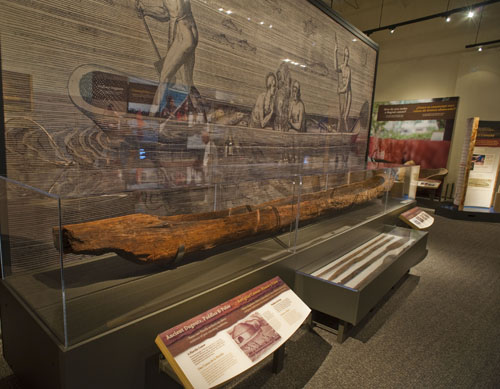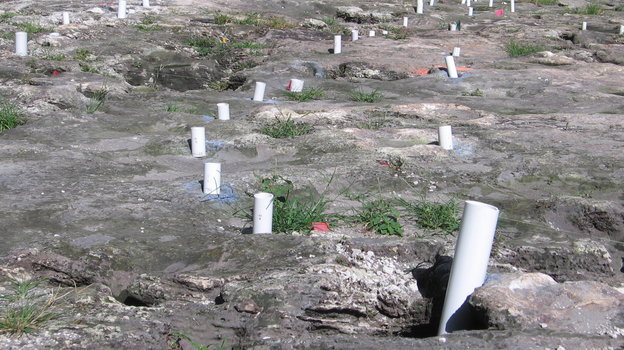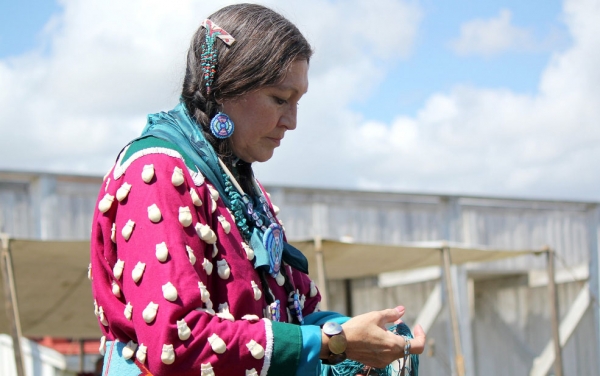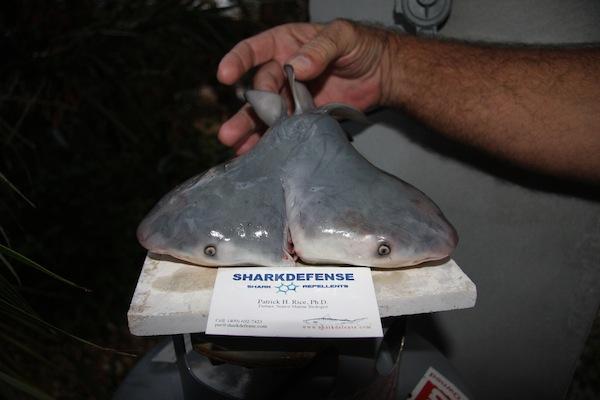
syəcəb


by Greg Allen
April 08, 2014 NPR.org
In downtown Miami, amidst the office buildings, shops and high-rise condos, visitors will soon be able to see a site historians are calling Miami’s birthplace.
The spot where the Miami River meets Biscayne Bay used to be home to the Tequesta tribe, which is where Spanish explorers who first arrived in Florida in the early 1500s encountered them. Today, that spot is the heart of downtown Miami.
A developer began making plans last year to build on one of the last pieces of undeveloped land there. When the company called in archaeologist Bob Carr to first conduct a survey, he found what may be the oldest prehistoric town in the eastern United States.
When the topsoil was cleared away, Carr found a series of postholes bored into the limestone bedrock. The postholes form the outline of six circular structures: buildings that once were part of a major Tequesta village.
“The Tequesta were the native people of southeastern Florida,” Carr says. “They were certainly here when the Europeans arrived. They probably encountered Ponce de León, who apparently did land somewhere near the Miami River.”
The discovery of the village was a major archaeological find, one that rivals the discovery of a related site 15 years ago on the other side of the Miami River. Development there uncovered a much larger ceremonial site dubbed the Miami Circle. Preservationists raised money to save it, but little has been done since then to improve that site or interpret it for visitors.
The developer of the new site, MDM Development Group, recently reached an agreement with historic preservationists that will preserve the village and also interpret some of the most important elements.
MDM plans to build a retail, hotel and office complex on the site but as part of the agreement, the building’s lobby has been redesigned. It will now include a museum gallery with glass walls and flooring to showcase some of the Tequesta circles for visitors.
Architect and preservationist Richard Heisenbottle says that visitors will “be able to see the circle and the archaeological dig through a glass floor. And, at that same time, there will be a video that explains the history of the site.”
A second Tequesta circle will also be visible from the sidewalk and showcased in an area planned for a restaurant in another part of the complex.
Most of the rest of the prehistoric Tequesta village will be preserved under the building and accessible to researchers and archaeologists through a crawlspace.
It’s not all preservationists hoped for, but it is pretty close. Along with the Tequesta village, the site also contains elements from its later uses, when it was a military fort and then Miami’s first resort hotel. Those layers of history will also be preserved and explained to visitors.
“It does explain very clearly to everyone as we look at this, ‘This is where Miami came from,’ ” Heisenbottle says. “Miami’s earliest days are right there.”
Along with a movie theater and restaurants, the complex will now also have a history museum and interactive displays for visitors.
“If you go through Europe and you see how they’ve been able to marry the relationships between commerce and history, that’s what is proposed here,” says Eugene Stearns, who represents the developer.
Miami is one of America’s youngest cities, just a little more than a century old. This new archaeological find is a reminder that Florida is also home to some of the oldest settlements in North America.
“This will give you the opportunity to see both sides of the story, that we’re one of the oldest human habitation sites and we’re the youngest major metropolitan area,” says historian Arva Moore Parks.
Parks is hopeful that the planned museum and Tequesta village display could help bring new attention and money to the city’s other important prehistoric site — the Miami Circle
Underneath the asphalt of a modern highway can be treasures of history. This proved to be the case for workers trying to install a water pipe in Davie, Florida. The workers were apparently working on a historical site, as upon survey, inspection, and some digging of archaeologists, a 2,000-year-old intact human skeleton on Pine Island Road was found.
By Randell Suba, Tech Times | January 13 2014
The bones belonged to a five feet tall woman who might have been a member of the Tequesta native American tribe and estimated to be in her 20s or 30s at the time of her death. The remains did not indicate trauma, leading experts to conclude that she died of a disease.
“It’s unusually well preserved, considering it’s been under a highway with thousands and thousands of cars going over it every day,” said director of the Archaeological and Historical Conservancy Bob Carr.
Ryan Franklin, another member of the archaeological team corroborated Carr’s assessment.

“It was pretty exciting to find. We found the toe, which became a foot. When you find a toe, there’s a good chance there’s something else going on. We had to stop and contact the state,” Franklin said in an interview. “She was almost perfectly intact, which is unusual. Usually when we find graves that are this old, the acidity of the soil can deteriorate the bones, it was unusual given her age.”
Indications that this can be historical site led to a three-week pause of the construction work on Dec. 18, in accordance with Florida laws. The construction resumed last Thursday.
Out of respect to the tribes,, the skeleton cannot be photographed. Scientists cannot also chip a part of it to do carbon dating and accurately check its age. To estimate the age of the skeleton, experts based it on artifacts found earlier in the area.
According to experts, the Tequesta woman was accustomed to the life on the Pine Islands about 2,000 years back. She could have been a skilled weaver and knew how to prepare smoked fish. The woman might have also hunted and fished from her canoe. The area where the remains were discovered were actually surrounded by the Everglades that stretched as far as Fort Lauderdale and Davie.
In the 1980s, three intact skeletons were discovered in the area. The latest archaeological dig is considered as one of the oldest recovered skeletons and among the best preserved ones.
Unauthorized fan merchandise surfaced on the web recently after the Florida State University Seminoles defeated the Auburn University Tigers at the BCS Championship last week.
Among the bevy of fan merch, one specific T-shirt has FSU officials rushing to see that it is discontinued.
The T-shirt, marketed as a “Florida State University 2013 National Champs Vintage Tee,” and manufactured by RowdyGentlemen.com, has the words, ‘SCALP ‘EM!,’ emblazoned across the chest. Below the text is an arrow and tomahawk.
Liz Maryanski, vice president for university relations, told Indian Country Today that on January 10, FSU officials began measures for an “emergency cease and desist” of all sales of the offensive T-shirt.
“We would never license that shirt,” Maryanski said. “That term is extremely derogatory and it’s offensive.”
Maryanski said that during such infringement issues, FSU employs a third party company, Collegiate Licensing, to address the matter. The company will then contact the unlicensed vendor directly, she said.
“Generally, they act very quickly,” she said.
Maryanski said that even if infringement were not an issue, FSU would work diligently to see that the T-shirt is eliminated.
“This is an infringement issue, but even it wasn’t, we would do everything in our power to shut it down,” she said.
Maryanski also said that FSU is “honored” to be able to use the Seminole name and is “very protective” of it.
RELATED Why Jim Warne Will Be Pressing Mute Button During Tonight’s BCS Game
Gary Bitner, spokesman for the Seminole Tribe of Florida, told Indian Country Today that the tribe is confident that FSU will make sure the shirt is discontinued.
“They (FSU) move quickly and effectively to do what needs to be done,” Bitner said, adding that the tee is a “terrible shirt.”
“It’s too bad that in 2014 we still see this kind of image and stereotypical presentation,” he said.
The Seminole Tribe’s Tribal Council authorized FSU to use its name and symbols and has an ongoing relationship with the university, Bitner said.
“The relationship between Florida State and the Seminole Tribe is one of mutual respect,” he said.
As of January 13, the T-shirt has not been taken down from the website and is still for sale.
Representatives of RowdyGentlemen.com did not respond to Indian Country Today’s request for comment.
An undefeated FSU beat Auburn 34-31 at the Rose Bowl in Pasadena, California, on January 6.
Read more at http://indiancountrytodaymedianetwork.com/2014/01/14/scalp-em-racist-t-shirt-surfaces-following-florida-state-bcs-victory-153092
Source: Native News Network
 WINTER HAVEN, FLORIDA – The Seminole Tribe of Florida, Inc., through its growing citrus production business, Seminole Pride, has acquired a majority interest in Noble Food Service, the sales and marketing division of Noble Juice of Winter Haven, Florida.
WINTER HAVEN, FLORIDA – The Seminole Tribe of Florida, Inc., through its growing citrus production business, Seminole Pride, has acquired a majority interest in Noble Food Service, the sales and marketing division of Noble Juice of Winter Haven, Florida.
“Our combined entity offers everything from premium orange juice, which is the standard bearer of citrus juices, to a full array of specialty citrus juices, the fastest-growing segment of the business.”
Said Tony Sanchez, president of the Seminole Tribe of Florida, Inc, the Tribe’s business development arm.
“By joining forces in a sales and marketing operation, Seminole Pride and Noble Juice will create one of the industry’s most extensive line of citrus juices and expand their distribution to more restaurants, schools, hotels, hospitals and catering operators throughout the United States,”
Sanchez said.
Seminole Pride products will now be sold through a broad national network of juice retailers, while Noble Juice will benefit from the minority supplier status of Seminole Pride. The two entities will share profits from future growth.
Citrus juices sold through Noble Food Service include:
Noble Food Service also markets organic apple juice, lemonade, organic lemonade and bottled spring water.
“The Seminole Tribe of Florida and the Roe family share a strong commitment to the sustainability of Florida’s bounty,”
said Quentin Roe, chief executive officer of the Noble companies, including Noble Food Service.
“In addition to responsible growing practices, we both feature eco-friendly containers, including the juice industry’s only 100 percent plant-based bottle and label.”
The Seminole Tribe of Florida, Inc., the business development arm of the Seminole Tribe, is working to diversify its product offerings under the Seminole Pride brand, which currently supplies spring water and beef, in addition to juice. Seminole Pride uses only those oranges that are picked at the peak of maturity to ensure a sweet and delicious juice.
Fruit for Seminole Pride is grown on the Brighton Seminole Reservation and at approved groves throughout Florida. The Seminole Pride business is one example of the Seminole Tribe’s mission to better the lives and livelihoods of all the American Indian peoples.
Source: Indian Country Today Media Network

We’ve heard of conjoined twins in human babies. Now it has been recorded, apparently for the first time, in a bull shark.
A fisherman trolling off the coast of Florida in April 2011 caught its mother and found multiple fetuses inside, one appearing to have two heads, said a study published in the Journal of Fish Biology on March 25. The clinical name for this is dicephalia, Michigan State said in a media release, also known as axial bifurcation. It happens when the embryo starts splitting in two, as with identical twins, but does not complete the process.
“Each head has five pairs of gills and gill openings, a single pair of eyes, a single pair of nares and a mouth with well-developed dentition,” wrote study so-author Michael Wagner, an assistant professor of fisheries and wildlife at Michigan State University, according to the New York Daily News. “The teeth appear both normally formed and the observed dental formula is within the normal range.”
Such sights are rare, partly because animals born with such profound deformities usually die soon after birth, Michigan State said. Since this one was found in the female shark’s womb, it was still alive. However, it did not survive long after the fisherman cut the umbilical cord; its normally developed siblings swam away when released.
It looks not unlike the two-headed trout that turned up a little too close to the mining operations of the J.R. Simplot Company last year and caused a stir.
“This is certainly one of those interesting and rarely detected phenomena,” said Wagner, who worked with colleagues at Florida Keys Community College. “It’s good that we have this documented as part of the world’s natural history, but we’d certainly have to find many more before we could draw any conclusions about what caused this.”
Likewise, he cautioned, the shark’s existence did not say anything concrete about pollutants.
“Given the timing of the shark’s discovery with the Deepwater Horizon oil spill, I could see how some people may want to jump to conclusions,” Wagner said in the Michigan State release. “Making that leap is unwarranted. We simply have no evidence to support that cause or any other.”
Read more at http://indiancountrytodaymedianetwork.com/2013/03/28/move-over-simplot-trout-first-ever-two-headed-bull-shark-caught-florida-148432